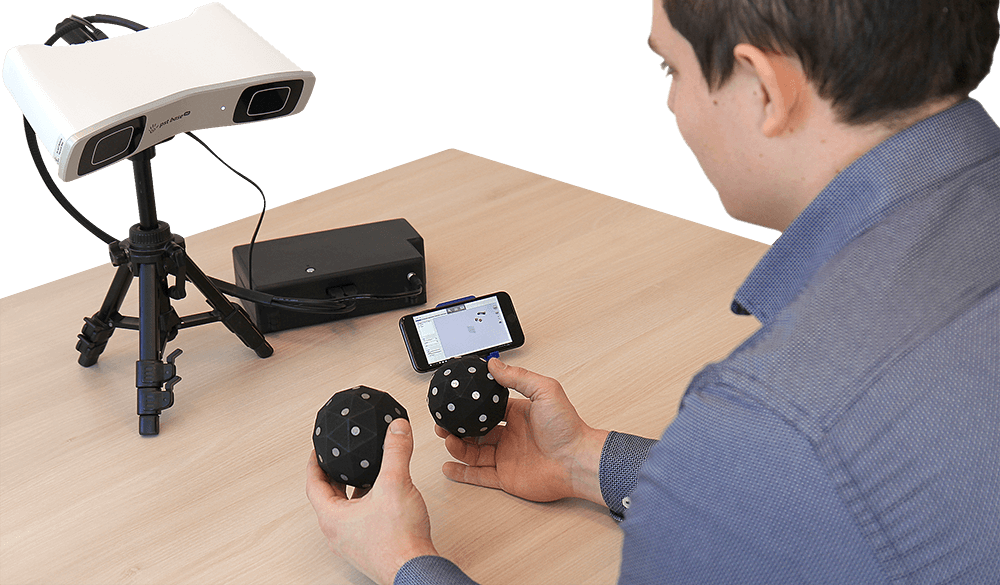Optical tracking explained
3D Localization Technology
3D localization technology or 3D position tracking defines measuring a 3D position and orientation of one or more objects or subjects that move in a defined space, relative to a known location. When measuring the 3D position and orientation of an object, it measures six degrees of freedom (6DOF): 3 positional and 3 angular coordinates. Alternatively, it may measure only an object’s position, which is referred to as 3DOF localization.

Optical tracking
Optical tracking is a 3D localization technology based on monitoring a defined measurement space using two or more cameras. Each camera is equipped with an infrared (IR) pass filter in front of the lens, and a ring of IR LEDs around the lens to periodically illuminate the measurement space with IR light. This light is not visible to the human eye and its intensity is completely safe for human beings to work with.
Objects that need to be tracked are equipped with retro-reflective markers, which reflect the incoming IR light back to the cameras. The IR reflections are detected by the cameras and then internally processed by the optical tracking system. This system calculates the 2D marker position in image coordinates with high precision. Using multiple cameras, the 3D position of each marker can be derived.
The 3D position can be measured by using a single marker in the measurement space. To be able to also measure the orientation of an object or to track multiple objects simultaneously, multiple markers are placed on each object. Such a configuration is easily created by simply sticking markers randomly onto the object, making sure multiple markers can be seen from each angle. By using a model of this configuration of each object, the optical tracking system is able to distinguish between objects and determine the 3D position and orientation of each object.
Optical tracking and its advantages
Optical tracking has proved to be a valuable alternative to tracking systems based on other technologies, such as magnetic, acoustic, gyroscopic and mechanical. There are various advantages to optical tracking, such as:
- Optical tracking is less susceptible to noise from the environment
- Optical tracking does not suffer from drift problems
- Optical tracking allows for many objects to be tracked simultaneously
- Interaction devices can be lightweight and wireless